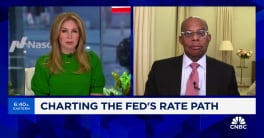While builder confidence in the market for new residential construction improved in March, it remained flat in April and residential construction numbers showed a decline in momentum as well.
Residential construction starts, which had surged in February, gave back all of those gains in March. The U.S. Census Bureau and the Department of Housing and Urban Development (HUD) report that construction began at a seasonally adjusted annual rate of 1.321 million housing units during the month, a decline of 14.7 percent from February’s level of 1.549 million units. Starts were 4.3 percent lower than their level in March 2023.
Single-family starts fell 12.4 percent to an annual rate of 1.022 million and multifamily starts dived 20.8 percent to 290,000 units. The two categories were down 21.2 percent and 43.7 percent respectively year-over-year.
Permits also declined. The annual rate was 4.3 percent lower at 1.458 million units compared to 1.523 million in February. Permits increased 1.5 percent on an annual basis. Single-family authorizations dropped from 1.032 million to 973,000, a 5.7 percent decline. This was still a 17.4 percent improvement from March of last year. Multifamily permits were unchanged at 433,000 units, down 22.1 percent year-over-year.
Analysts polled by Econoday had forecast starts at 1,480 million and permits at 1.510 million, substantially overshooting both numbers.
The National Association of Home Builders (NAHB) said the NAHB/Wells Fargo Housing Market Index (HMI) broke a four-month string of gains this month, remaining at the 51 level, unchanged from March, but still above the key breakeven point of 50.

Robert Deitz, NAHB’s chief economist, said the flat reading suggests the potential for demand growth is there, but buyers appear to be waiting until there is more clarity on the direction of rates. “With the markets now adjusting to rates being somewhat higher due to recent inflation readings, we still anticipate the Federal Reserve will announce future rate cuts later this year, and that mortgage rates will moderate in the second half of 2024,” he said.
The HMI gauges builder perceptions of current single-family home sales and sales expectations for the next six months as “good,” “fair” or “poor” and asks builders to rate traffic of prospective buyers as “high to very high,” “average” or “low to very low.” Scores for each component are then used to calculate a seasonally adjusted index where any number over 50 indicates that more builders view conditions as good than poor.
The HMI index charting current sales conditions in April and the index gauging buyer traffic each increased 1 point to 57 and 35, respectively. The component measuring sales expectations in the next six months fell 2 points to 60.
Looking at the three-month moving averages for regional HMI scores, the Northeast increased 4 points to 63, the Midwest gained 5 points to 46, the South rose 1 point to 51 and the West registered a 4-point gain to 47.
The April survey also showed that 22 percent of builders cut home prices this month, down from 24 percent in March and 36 percent in December 2023, while the average price reduction held steady at 6 percent for the 10th straight month. Fifty-seven percent of builders used some form of sales incentives. The share was 60 percent in March.
On an unadjusted basis, the Census/HUD report shows housing starts in March are estimated at 110,900 including 87,100 single-family units. The totals in February were 110,100 and 81,700. There were 123,500 permits issued during the month compared to 119,100 in February. The single-family totals rose from 79,400 to 84,300.
Homes were completed during the month at an annual rate of 1.469 million units. This was a decline of 13.5 percent from February and 13.9 percent from the previous March. Single-family completions dropped 10.5 percent and were 8.5 percent lower than a year earlier while multifamily completions were down 19.9 percent.
For the year to date (YTD) housing starts total 318,800, up 1.3 percent from the same period in 2023. Single-family starts have risen 27.1 percent to 239,100 while multifamily starts have fallen by 38.0 percent to 76,400 units.
YTD permits are up 3.8 percent, entirely due to a 24.9 percent increase in single-family permits which helped offset a drop of 25.2 percent in the multifamily sector.
Completions total 347,300 thus far in 2024, an increase of 4.3 percent from 2023. There have been 5.8 percent fewer single-family homes completed but multifamily completions have risen 27.4 percent.
At the end of the reporting period, there were 1.646 million homes under construction, 689,000 of which were single-family homes. in addition, there were 273,000 permits available 141,000 for single-family houses.
Starts dropped by double digits in three of the four major regions and permits also drifted lower.
Starts In the Northeast were down 36.0 percent compared to February and 56.8 percent on an annual basis. Permits dropped 20.8 percent but increased 8.1 percent for the year.
In the Midwest, starts were down 23.0 percent for the month but were 18.0 percent above the March 2023 pace. Permits dropped 14.7 percent from February and 3.4 percent on an annual basis.
The South’s starts fell by 17.8 percent and 11.0 percent from February and from March 2023, respectively. Permits fell 0.6 percent but increased by 0.4 for the year.
The only positive changes were in the West, up 7.1 and 48.1 percent for the month and year. Permitting increased 5.1 percent and 4.1 percent from the two earlier periods.







